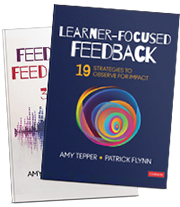Last year, the New England Association of School and Colleges visited Wamogo Regional High School in Litchfield, CT for our decennial accreditation. As this process was occurring, we were simultaneously engaged in the new, teacher evaluation process. In addition, other local initiatives placed additional demands on our staff. Specifically, we engaged a new Science and Math Curriculum as well as a 1:1 initiative and other expectations surrounding our use of instructional technology. As is often the case, as we experienced the flurry of initiatives and corresponding change, we sometimes had difficulty in helping our staff (or even ourselves) recognize the coherence that exists among these new practices. As can be expected, the combination of these professional responsibilities created a great deal of anxiety and stress for our staff. They complained of “too many initiatives” and could not easily connect these efforts with a cohesive vision. In hoping to assuage the fear and the collective feeling of being overwhelmed, the administrative team has constantly grappled with the challenge to make cohesive connections between and among these processes. The specific challenge our administrative team turned to was to create a simple and clear connection between the work we had done for the NEASC self-study and the expectations for instructional improvement and growth embedded in the teacher evaluation process.
 During the NEASC self-study process we had developed a series of rubrics related to 21st Century Learning. The staff and all teachers made a commitment to utilizing them across the curriculum endorsed these rubrics. We were pleased to see that students and teachers alike embraced the rubrics to improve 21st Century Skills. Concurrently, with the beginning of the new teacher evaluation process, teachers struggled to write goals and design Indicators of Academic Growth (IAGD’s) that were meaningful to them but also measured student growth. It seemed a natural connection to construct a framework by which teachers could partner the efforts started with the NEASC self-study and the teacher evaluation process.
During the NEASC self-study process we had developed a series of rubrics related to 21st Century Learning. The staff and all teachers made a commitment to utilizing them across the curriculum endorsed these rubrics. We were pleased to see that students and teachers alike embraced the rubrics to improve 21st Century Skills. Concurrently, with the beginning of the new teacher evaluation process, teachers struggled to write goals and design Indicators of Academic Growth (IAGD’s) that were meaningful to them but also measured student growth. It seemed a natural connection to construct a framework by which teachers could partner the efforts started with the NEASC self-study and the teacher evaluation process.
Since our school-wide rubrics were already a measure by which we monitored student progress it seemed an organic connection to use this as our framework. This summer, as an organization, our leadership team made a decision that all teachers will have the same Student Learning Objective (SLO) and they will have choice of IAGDs centered on mastery and growth that is connected to one of the four key components of our district goal.
 During a curriculum and assessment audit with ReVision Learning, we examined current and needed assessments in alignment with the four primary components of our district goal. We established our own clarity about what assessment practice helps us measure our school wide success towards our district goal. Since the four components are represented in our school-wide rubrics, these become the basis by which we will measure our school improvement and student achievement. In this way, teachers are given a comfortable and familiar structure and are then able to select a skill that they find most pertinent and valuable to their students’ growth within their respective discipline. The measure (rubric) is already in place and teachers are fully immersed and calibrated in its use allowing teachers to target and design their IAGDs accordingly.
During a curriculum and assessment audit with ReVision Learning, we examined current and needed assessments in alignment with the four primary components of our district goal. We established our own clarity about what assessment practice helps us measure our school wide success towards our district goal. Since the four components are represented in our school-wide rubrics, these become the basis by which we will measure our school improvement and student achievement. In this way, teachers are given a comfortable and familiar structure and are then able to select a skill that they find most pertinent and valuable to their students’ growth within their respective discipline. The measure (rubric) is already in place and teachers are fully immersed and calibrated in its use allowing teachers to target and design their IAGDs accordingly.
Make no mistake that the decision to marry NEASC and teacher evaluation was not seamless and there was no light bulb moment. Rather, it was a painstaking response to teacher’s feeling overloaded and our administrative effort to streamline what we were demanding of them. This process has allowed for a cohesion that we had not afforded our teachers in year one of our teacher evaluation process. What is vitally important is that teachers have the autonomy to choose their focus and subsequently develop IAGD’s that they find important. But what is more important is that we have connected the dots for our staff by using an effective measure, already in use, to gauge both student progress and instructional improvement. Hopefully, we have simultaneously responded to our teacher’s need for clarity and cohesion by simplifying and de-pressurizing the process.
Authors:
The authors participated in a two-part Summer Advance with ReVision Learning in July and August.
Bill Egan, Wamogo Regional High School Principal
Jody Lambert, Wamogo Regional High School Assistant Principal
Abbe Waldron, Chief Academic Officer – Wamogo Regional High School




Leave a Reply